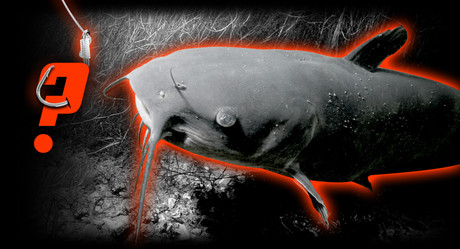5 Tips for Catfish That Don’t Want to be Caught
Posted by Spencer Bauer on 11th Apr 2022
5 Tips for Catfish That Don’t Want to be Caught
One thing I’ve learned is just because you have time to do a little fishing, doesn’t mean the fish care. When you only have the opportunity to be on the water so often, it’s good to have an ace up your sleeve, or a dozen, in order to make the most of the precious time you get to be out there. When the fish are being stubborn, here’s a few tricks I’ve learned to help you land a few extra cats you might not have otherwise.
One thing I’ve learned is just because you have time to do a little fishing, doesn’t mean the fish care. When you only have the opportunity to be on the water so often, it’s good to have an ace up your sleeve, or a dozen, in order to make the most of the precious time you get to be out there. When the fish are being stubborn, here’s a few tricks I’ve learned to help you land a few extra cats you might not have otherwise.
1 - Be Flexible
This isn't the kind of flexibility you might have learned in your girlfriend’s yoga class. I’m talking about using small, flexible baits. Everytime you get a nibble or bounce of the rod tip, that’s a fish making an attempt to eat your bait, or at least give it a taste. Sure, lots of these bumps are from small fish, but not all of them. By using a small, flexible piece of cutbait, such as the belly portion of a shad or sucker, you make it easier for the fish to get it down the hatch, and a hook in the corner of their mouth.
2 - Light Wire Hooks
Along the same lines as flexible baits, a small, lightwire hook makes it easier for inactive cats to pick a bait up off the bottom. When the water is warm and the weather is right, this is rarely a worry. Early and late in the year, or after a cold front, it’s a different story. The Whisker Seeker Circle K hook fits the bill for this perfectly.
3 - Double Hook Rigs
At face value, a rig with two hooks and two baits only seems like a way to give the fish two chances to find your bait. While you’re not necessarily wrong, it does even more than that. It creates a setup in which you’re presenting a small bait that has just as much scent as a larger bait. How you tie your two hooks up on the rig doesn’t matter much. The most important part is that you have two light wire hooks with two small, flexible pieces of bait, that puts out more scent. This draws more attention from the fish and creates a presentation that even inactive fish often gobble up with they only nibble on other rigs. Check your local regulations though, as this style of rigging isn’t legal in every state or body of water.
4 - Keep er' Movin'
There are definitely times when the majority of, if not all cats are inactive. Even during these times, some are just a little more hungry than others. It pays to stay mobile. Generally in warmer, more stable weather conditions, I move every 10-20 minutes. When times are tough, I give the fish a little more time, generally 20-40 minutes to find the bait. While I do give them more time, I still remain mobile, and in my experience, that makes a big difference.
5 - Softy's Finish First
Big, beefy catfish rods are great when fish are slamming baits, but when takedowns are softer and fish are a little more opposed to that kind of resistance, a soft-tipped fishing rod can lead to a lot more hookups. For blues and flatheads I scale down to a medium-heavy or even medium power Chad Ferguson Series Rod. For channels, my favorite rod for inactive cats is the Catfish and Carp Spinning Rod. These softer tipped rods will convert more of the taps and nibbles into fish landed by allowing fish to more gradually and gently load the rod up when they bite.
The next time Mother Nature is hard on you, and the weather is less than ideal, I hope these tips help you catch a few more fish. Good luck on the water and I hope you catch a giant!
Patience is a virtue, at least that’s what they say. I’m not sure who “they” are. Apparently no one who’s tried to consistently catch daytime flatheads. If you can pull that feat off, you know patience is the last thing
For more tips & content from Pro-Staffer Spencer Bauer visit
River Certified, watch videos on Youtube or follow him on Twitter.

